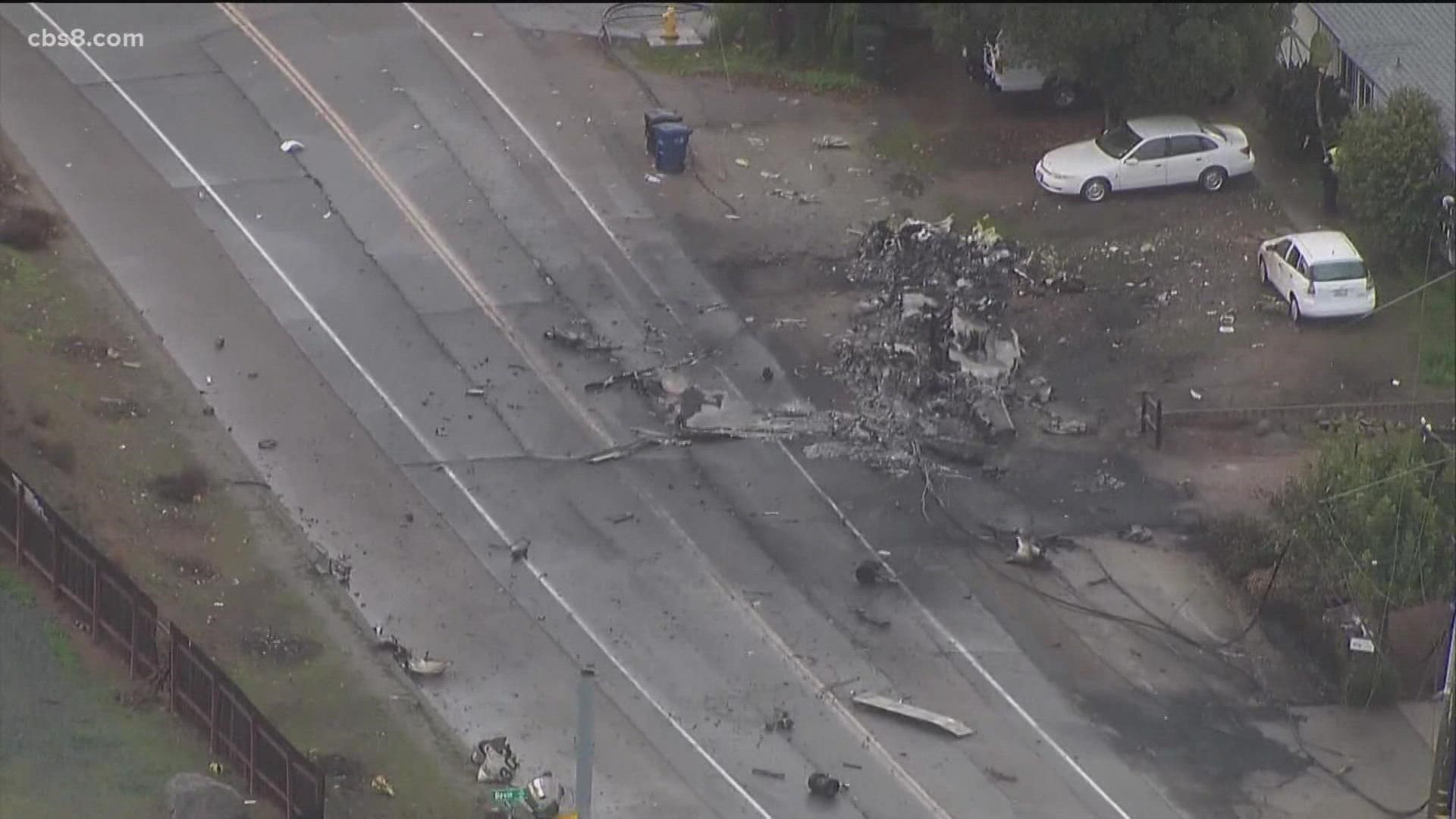SAN DIEGO COUNTY, Calif — As the investigation into Monday night's fatal Learjet crash continues, more information on the certifications of the two pilots onboard has come to light.
"What was done here was really a combination of errors in my opinion," said a commercial pilot and flight instructor Robert Katz.
He believes that the plane crash outside of El Cajon, which killed all four people on board, was entirely preventable.
"I believe this all boils down to a pilot who was in a hurry to terminate the flight," Katz told News 8.
According to the National Transportation Safety Board, the plane had originally been on an instrument approach to runway 17 at Gillespie Field, but the pilot then requested a change to a visual approach to runway 27R.
"By canceling the instrument flight rules plan in minimal weather conditions is just rolling the dice with everyone's life," Katz said.
Katz said it appeared that the pilot made too sharp of a turn heading to the runway, causing what is known as an accelerated stall.
"The airplane will stop flying and it falls out of the sky like a rock," he added.
Public records provided by the FAA detailing the qualifications of the pilots also caught Katz's attention: specifically, the qualifications of Douglas Grande, who Katz believes was the pilot-in-command.
On Grande's pilot certificate, there is a notation that states that the Learjet is subject to pilot-in-command limitations: an ambiguous statement that Katz said will require more research.
"But it could be such things such as restricting his authorization to fly at night, to fly in certain weather minimums, to conduct circling approaches, circling maneuvers... any number of things," he said.
Katz stressed that, at this point, it is not known what those exact limitations are.
"But the fact that they do exist, and given the nature of his incident as we know it so far, it strikes me as a bad mix," Katz said.
Katz added that, according to FAA public records, the second pilot, identified as Julian Bugaj, was properly credentialed as a "second-in-command', or co-pilot
The investigation by the NTSB into Monday's crash could take up to two years to complete.
WATCH RELATED: Victims of East County San Diego plane crash remembered

